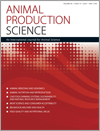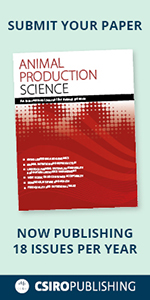
Animal Production Science
Volume 60 Number 14 2020
An increase in goat weaning rates is needed to increase profitability and expand the goat meat industry. A lack of information on levels of performance hampers effective management intervention in Australia, and, while fertility and fecundity levels are often high, perinatal kid loss is often the major source of wastage. The causes of perinatal loss need to be quantified under varying management types to enable the development of appropriate interventions.
AN20161 Abstract | AN20161 Full Text | AN20161PDF (284 KB) Open Access Article
AN19123Effect of controlling future rate of inbreeding on expected genetic gain and genetic variability in small livestock populations
There is need to monitor current rates of relatedness in livestock production for control of future rates of inbreeding to avoid reduced reproduction and production performance. Inbreeding levels in Sahiwal cattle population in Kenya are on increase, and are close to 1% per generation above which a population starts to lose their genetic diversity. The study recommends increasing the current size of the breeding population by including other institutional and privately-owned herds.
AN18325Genetic parameters for weights from birth to 10 years of age in different beef cow breeds
Selecting cattle for bodyweight at young ages alters mature weight, which may not be desirable due to the rearing of cows in extensive pasture systems and the increased nutritional requirements of larger animals. High and positive genetic correlations indicated a strong association among measurements at different ages, and selection for the desired mature weight should be performed through selection indices to simultaneously select the desired weight at young age and at maturity.
The voluntary intake of forages by ruminants is a key driver of productivity and is generally estimated from forage digestibility, although other characteristics are also important. A meta-analysis concluded that estimation of the voluntary intake of tropical grass hays by sheep was improved by using both digestibility and leaf content as predictors. Age of regrowth was less useful. Nevertheless, a large error may be associated with estimation of voluntary intake of forages.
Antibiotics have been used as growth developers in poultry because they contribute to enhancing the immunocompetence of birds against infectious diseases; however, use of antibiotics has been banned in several countries. Accordingly, antibiotics have been replaced by effective dietary supplements such as probiotics, which enhance growth and positively modulate immune responses. This study compared Lactobacillus acidophilus and avilamycin as supplements in broiler feed and found that L. acidophilus had greater positive effects on growth and plasma lipid levels.
AN19340A description of biosecurity practices among selected dairy farmers across Australia
Farm biosecurity refers to all measures geared towards the prevention of disease occurrences in farm animals. The study assessed important biosecurity aspects and motivations for implementing such measures within dairy farms in Australia. The study demonstrated that the biosecurity practices were variable and unstandardized, and animal and human health reasons were the main motivators for such programs.
AN19539Putative biomarkers for early detection of mastitis in cattle
Mastitis in dairy animals causes heavy economic losses to the dairy industry worldwide. Early diagnosis and timely treatment is a major challenge for veterinary clinicians. Our findings reported early diagnostic putative markers for mastitis in dairy animals. These findings would help veterinary clinicians in the early diagnosis and timely management of mastitis in dairy animals.
The health of dairy cattle in the postpartum period is essential to maximising profitability; however, negative energy balance occurring during the peripartum period frequently results in subclinical ketosis. In this study of a grazing herd, multiparous cows calving in the spring showed higher prevalence of subclinical ketosis, which was also associated with higher occurrence of other postpartum diseases and greater milk yield but had no relationship with fertility. Appropriate nutritional and reproductive management protocols may minimise the impact of subclinical ketosis during spring, enhancing grazing dairy herd productivity.
Grass finishing of later maturing bull beef cattle is more economically efficient compared with concentrate finishing. In a study with animals finished with various levels of grass input at pasture the production of beef from grass-based finishing systems resulted in a higher proportion of polyunsaturated fatty acids but the oxidative shelf life of beef was not adversely affected. Therefore, late maturing bulls can be finished on grass without negatively impacting on the shelf life of beef.
AN19239Differences between cattle and buffalo in the water-soluble proteins of the Longissimus muscle as shown by electrophoretic techniques
Methodologies are needed to identify meat fraud, namely, the substitution of meat with another one similar sensorial characteristics without informing the consumer at the time of purchase. We tested the hypothesis that electrophoresis techniques (NATIVE PAGE, and non-denaturing or denaturing SDS–PAGE) allow the identification and distinguishing of water-soluble proteins of the longissimus muscle of cattle and buffalo species. The electrophoretic profiles of some cattle and buffalo muscle proteins are distinct, and electrophoresis is a promising method for detecting adulterations in meat cuts.




